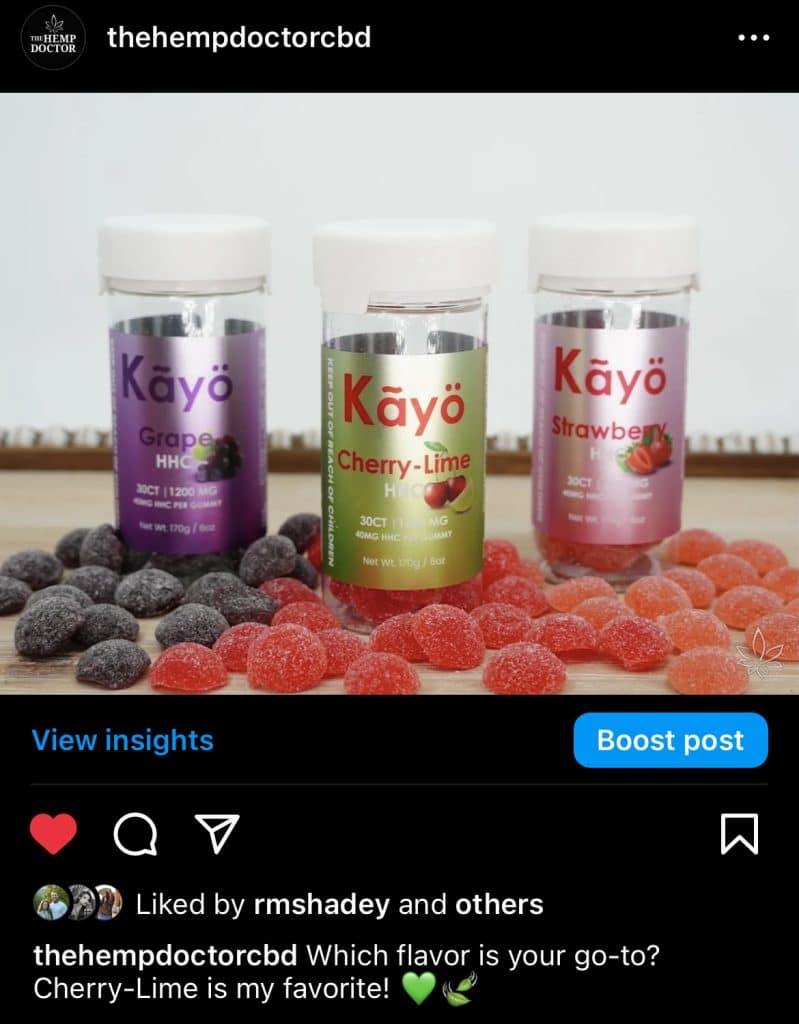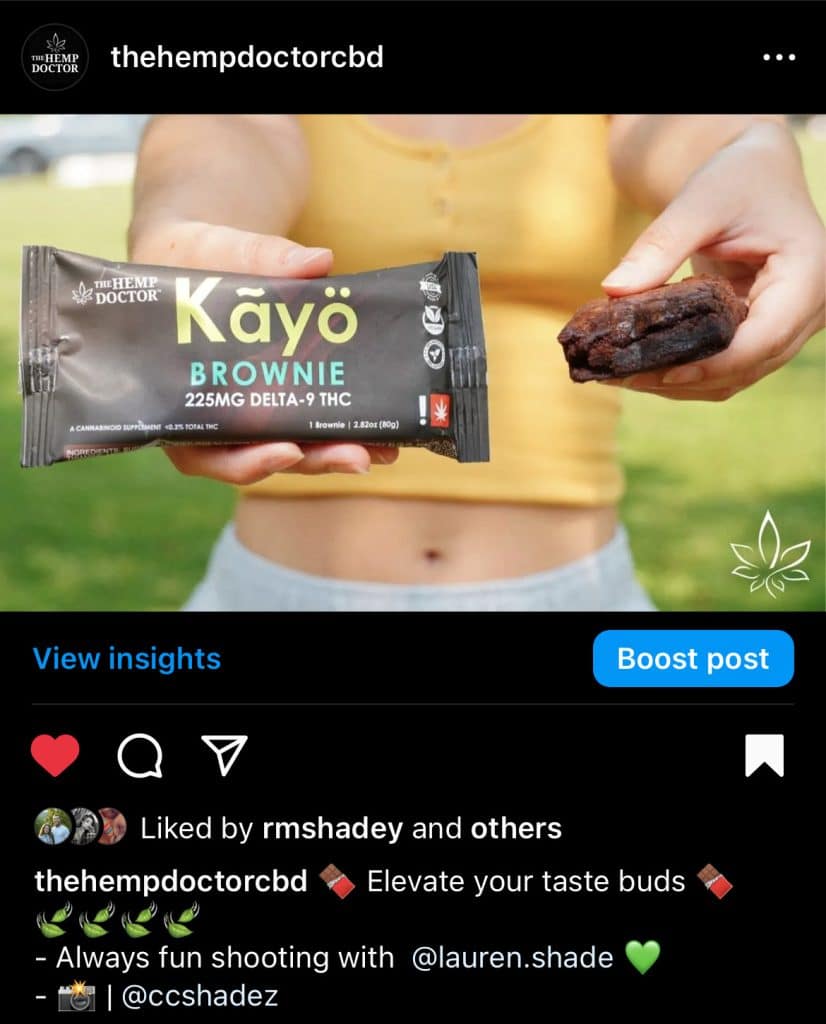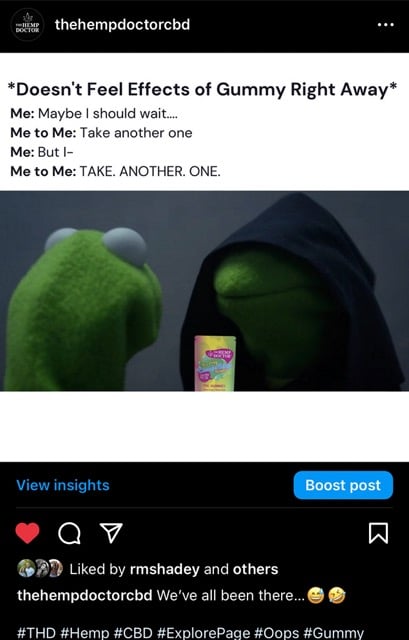What Is 11-Hydroxy-THC? Everything You Need to Know
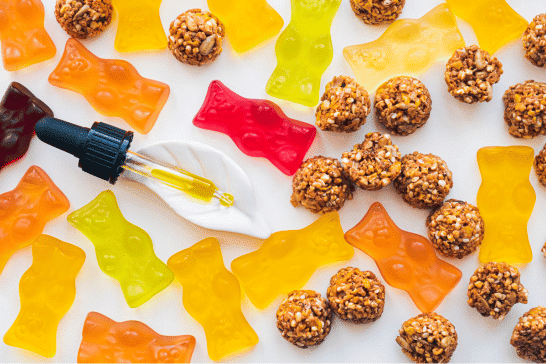
With the huge demand for cannabis products today, it is likely that you have tried one form or another. One product type gaining traction among cannabis enthusiasts is edibles. Its effects are distinctly long-lasting and balanced. However, at times, it can be surprisingly potent. The reason—11-Hydroxy-THC.
But what is 11-Hydroxy-THC exactly? Read on to discover how this compound undergoes a unique transformation when metabolized by the body, differentiating it from other cannabinoids.
???? Key Takeaways
- 11-Hydroxy-THC is created during the first-pass metabolism where THC is broken down by enzymes into the said metabolite.
- The 11-Hydroxy-THC metabolite is one of the primary drivers for the edibles’ long-lasting, intense, and full-body high.
- Vaping and other cannabis consumption methods have a lesser chance of producing a significant amount of 11-Hydroxy-THC to the body because it doesn’t pass through the liver, unlike edibles.
- Control the amount of 11-Hydroxy-THC your body produces by starting with the smallest dose and waiting for the effects to happen before taking another edible.
The Difference between Edibles and Other Delivery Methods
Before we unpack the question, ‘What is 11-Hydroxy-THC?’ It’s important to understand the difference in how your body handles the common delivery methods of cannabis products.
Depending on if it’s a CBD, Delta 8 THC, or another cannabis product, you will find high levels of cannabinoids within that product. These are the beneficial compounds key to enhancing your everyday routine.
Here are the most common methods for delivering cannabinoids to your system. This section provides a clearer context for understanding the unique production style of HXY11 THC for each method.
Vaping and Smoking
With vaping, the cannabinoid oil is made into a vaping solution. This solution is heated with a vape pen and inhaled into the lungs.
Smoking is simply the burning of hemp flowers in a rolled joint and inhaled. The lungs then distribute the cannabinoids found in the vape solution or smoke directly into the bloodstream. This gives the user an immediate effect from the product that is felt throughout the body.
In contrast, the oral metabolism of Hydroxy 11 THC, when ingested in forms like edibles, follows a different pathway in the body compared to inhalation methods. For this reason, the 11 Hydroxy metabolite effects through vaping methods do not last as long as edibles.
Balms and Salves
With balms and salves, the cannabinoid extract is mixed with beeswax and other skin-enhancing products. The user then rubs a small amount on their skin. From there, the skin absorbs the compounds of the balm including the cannabinoids. This method works well for specific areas and is not felt throughout the body.
Most of the active ingredients in topicals don’t reach the bloodstream, so it’s unlikely for 11-Hydroxy-THC to be made via external application.
Edibles
These can be tinctures, soft gels, or other edibles like gummies taken orally and processed through the stomach and liver before entering the bloodstream. This method takes longer to feel the effects. However, the effects last the longest compared to other consumption methods.
When discussing 11-Hydroxy-THC potency and 11-Hydroxy-THC benefits, it’s important to note that this compound, particularly in edibles, undergoes a distinct metabolic process, which may alter its potency and the duration of its effects compared to other forms of THC.
What Is 11-Hydroxy-THC?
There are two well-known tetrahydrocannabinol (THC) cannabinoids in the cannabis plant: Delta 9 THC and Delta 8 THC.
Delta 9 THC is the most commonly known and is the one responsible for the high a user gets from ingesting or smoking marijuana. Delta 8 THC is slightly different on a molecular level and produces less of a high when consumed.
If you ingest an edible product that contains either of these THC cannabinoids, the digestive system and liver go to work to break them down and feed them into the bloodstream. At this junction, THC is turned into a metabolite known as 11-Hydroxy-THC. To be more specific, Delta 9 THC turns into 11-OH-Δ9-THC and Delta 8 THC turns into 11-OH-Δ8-THC.
Discussions surrounding 11-Hydroxy-THC vs. Delta-9 and Delta-8 THC highlight the distinct ways in which 11-Hydroxy-THC effects are processed in the body, differing significantly from those of Delta-9 and Delta-8 THC.
Why Are Edibles Sometimes Stronger Than Smokables?
One theory that points to edibles’ stronger and full-body high is because of 11-Hydroxy-THC. Not only does the stomach turn THC into 11-Hydroxy-THC. The hepatic portal system also transfers the cannabinoid to the liver, which also turns the THC into 11-Hydroxy-THC. This overlapping bodily mechanism greatly increases the amount of THC that goes to the brain and the rest of the body.
When you vape or smoke cannabis, the 11-Hydroxy-THC levels are only around 5 percent. However, when you take a cannabis product orally, the average levels of 11-Hydroxy-THC jump from 25 percent, increasing further.
The more 11-Hydroxy-THC produced, the better the absorption rate to the blood-brain barrier.
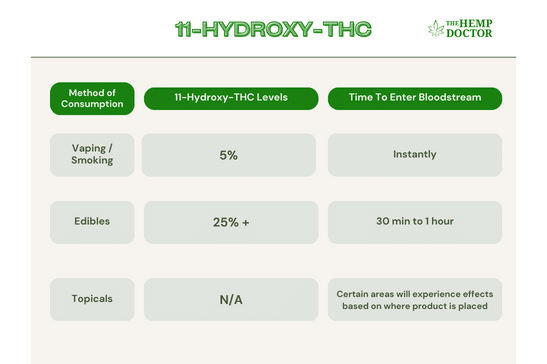
How to Control the 11-Hydroxy-THC Effects?
Once the 11-hydroxy-thc effects happen, there’s no stopping them from continuing until the effects mellow on their own. Hence, with this type of metabolite, prevention is the only solution.
Edibles are a great way of getting your daily dose of THC with controlled concentrations. However, if you are just beginning to experience the benefits of edible THC there are a couple of things you should keep in mind.
When it comes to the edibles dosage, start slowly.
If you’re planning to take an edible like our Delta 8 THC Gummy Worms, start with one-third of each gummy. From there, if you do not experience the desired results, increase your consumption until you feel the desired outcome.
Wait for the effects to happen before taking another dose.
Sometimes, edibles take longer to effect. Understand that this is common, especially compared to other intake methods. You should wait at least a couple of hours for THC to kick in as the effect may be delayed. Only after you’ve felt the effect can you start to take another edible. With this system, you won’t accidentally ingest too much and fall into a bad trip.
Ingesting THC is different from vaping, smoking, or using it in a balm. This is because the THC is produced in a different form when chemical changes occur during digestion. Edibles will take longer to get you to feel ‘high,’ but the effects are much longer-lasting.
Get Your Delta 8 THC Edibles from The Hemp Doctor!
When it comes to getting the best Delta 8 edibles on the market, there is no place better than through The Hemp Doctor—America’s Premier Hemp & CBD Dispensary. At the federal level, our products comply with the 2018 Farm Bill, which allows hemp-derived products with no more than 0.3% THC to be federally legal. Don’t just take our word for it, try it now!
FAQs
Why do cannabis edibles seem to be not as potent to others?
Several factors influencing the potency of edibles exist. One aspect to check is the differences in our genetics. Enzymes in the liver process THC compounds from edibles. Some people have more of these enzymes than others—hence, their body processes THC at a faster rate which then diminishes potency.
Is 11-hydroxy-thc legal?
Yes. The compound falls under the 2018 Farm Bill which determines hemp derivatives to be legal as long as Delta 9 content stays below the 0.3% limit. Although 11-Hydroxy-THC is a direct THC metabolite, it’s considered a different compound altogether.

